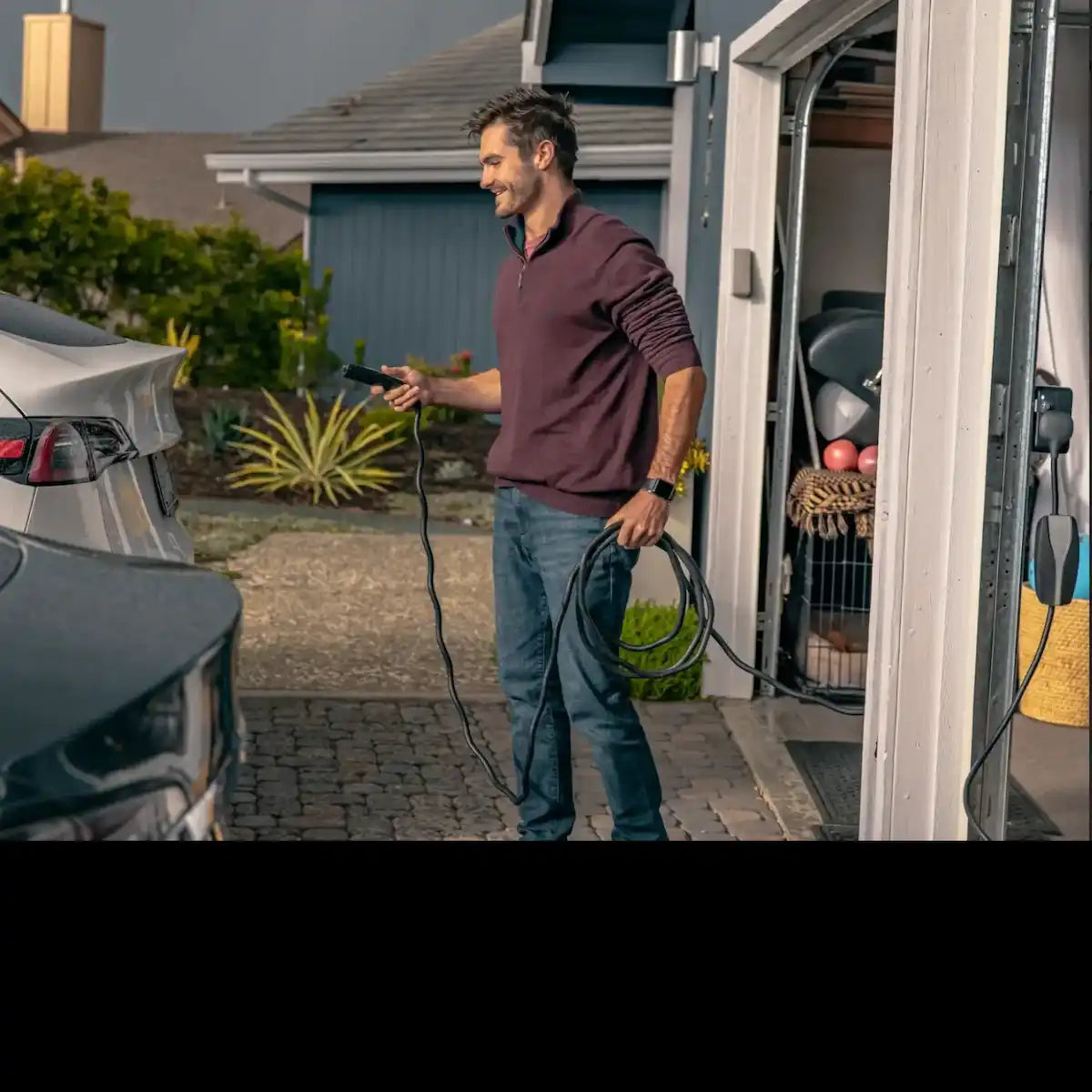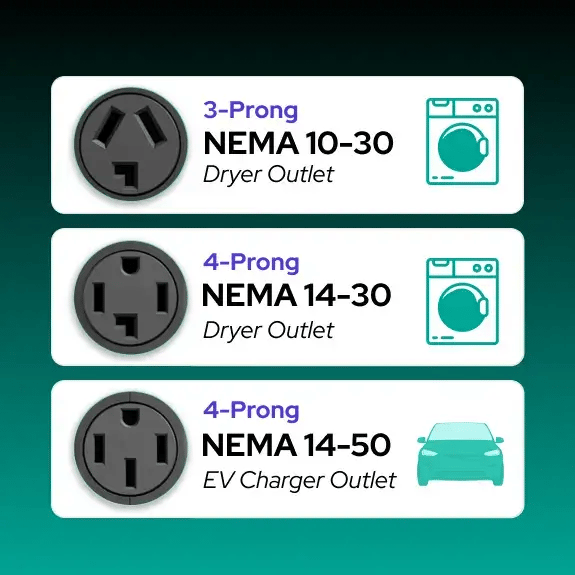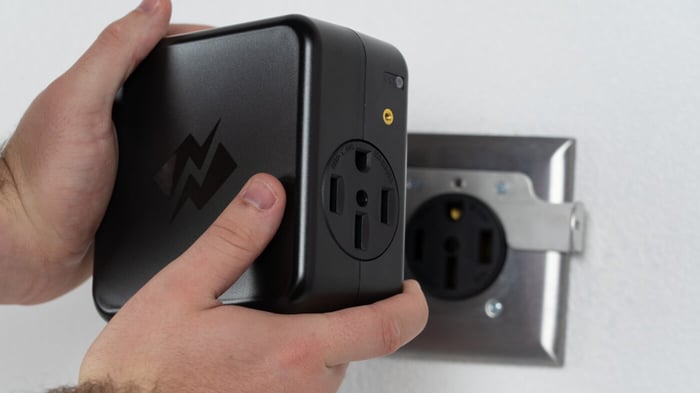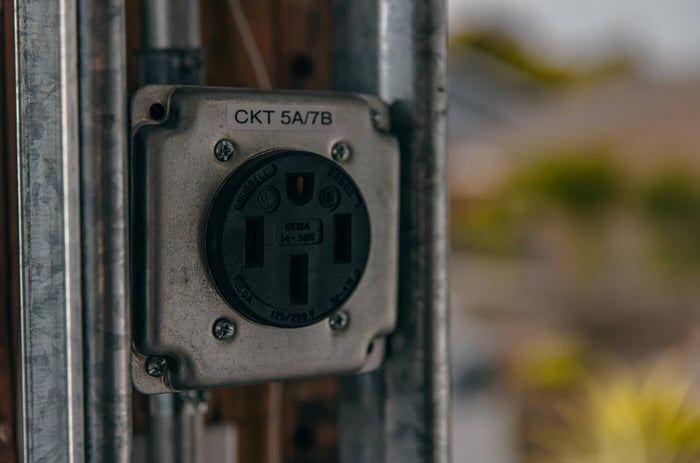The NeoCharge App is now available - sync your EV and utility rate to ensure your car charges at the cheapest times to save $300+/year. Completely free - Try it today!
Not Sure What Type of Dryer Outlet You Have?
Are you puzzled about the type of outlet your dryer uses? Fear not! Whether you're looking to identify your current setup for a new appliance or exploring options like EV charger dryer outlet solutions and the innovative EV charger dryer splitter, understanding your dryer's power source is crucial. Let's make this easy and engaging while we unravel the mystery behind 120V and 240V outlets, including the NEMA 10-30 and NEMA 14-30 configurations and how you might be able to use them as an EV dryer splitter.
120V Outlets: The Gas Dryer Connection
If your dryer is connected to a standard 120V outlet, it's a clear indicator that you have a gas dryer. These dryers typically use a standard household outlet – the same kind you'd plug a lamp or a TV into. Gas dryers use a small amount of electricity to power the drum, fan, and controls, but the heat is generated by natural gas or propane. This is an essential piece of information for consumers considering energy-efficient solutions like a dryer EV switch or planning to utilize a dryer outlet splitter for EV charging.
240V NEMA 10-30 Outlets: The 3-Prong Classic Now, let's talk about electric dryers.
The 240V NEMA 10-30 outlet, a classic 3-prong design, is a staple in homes built before 1996. It's specifically tailored to meet the high energy demands of electric dryers, delivering more power than standard 120V outlets. But its utility extends beyond just powering dryers. Thanks to innovative solutions like the 240v splitter from NeoCharge called the Smart Splitter, these outlets have gained a new role in modern homes.
With the rise of electric vehicles (EVs), the NEMA 10-30 outlet has become a versatile player. By using a 240v splitter, this outlet can simultaneously support an electric dryer and charge an EV, without additional complex wiring or costly upgrades. This dual-purpose use is not only convenient but also efficient, making it an ideal solution for EV owners seeking easy home charging options.
You are able to pull up to 24 Amps on a 30 amp breaker which is what the NEMA 10-30 outlet uses.
If using this type of outlet, you will commonly need a NEMA 10-30P (Dryer outlet) to NEMA 14-50R (EV Charger) adapter to be able to use your level 2 EV charger at home. Most EV chargers use a NEMA 14-50 outlet which would be very different from the NEMA 10-30 dryer outlet.
240V NEMA 14-30 Outlets: The Modern Standard for Enhanced Safety and Efficiency
When it comes to modern homes, the 240V NEMA 14-30 outlet is the gold standard for electric dryers and EV charging. Introduced in homes built post-1996, this 4-prong outlet represents a significant leap in safety compared to the older 3-prong outlets. The NEMA 14-30's design, with separate wires for grounding and neutral paths, is engineered to minimize the risk of electrical shocks, a crucial aspect in areas where high voltage and moisture may coexist, such as laundry rooms.
The NEMA 14-30 outlet isn't just about safety; it's a nod towards future-proofing your home with EV charging. One such innovative solution is the use of a NEMA 14-30 splitter. This device allows homeowners to easily share 240V outlets between their electric dryers and EVs without the need for additional wiring or costly electrical upgrades. It's an elegant solution that merges the need for daily convenience with the increasing demand for electric vehicle infrastructure.
In the context of EV charging, the significance of the NEMA 14-30 outlet becomes even more pronounced. Electric vehicles are becoming a mainstay in modern transportation, and the need for accessible, efficient charging solutions is growing. This is where products like NeoCharge's 240V Smart Splitter come into play. The Smart Splitter is designed to seamlessly integrate with your existing NEMA 14-30 outlet, enabling you to charge your EV using the same outlet as your dryer. This not only saves space and simplifies your home’s electrical setup but also can lead to significant cost savings. By utilizing your existing dryer outlet for EV charging, you avoid the expense of installing a separate dedicated EV charging station.
Making It Easy to Identify Your Outlet: A User-Friendly Guide
Identifying the type of outlet your dryer uses is surprisingly straightforward. The key is to focus on the number of prongs and the overall shape of the outlet.
-
For gas dryers, a standard household outlet with 2 prongs plus a ground (3 in total) is typical. This 120V outlet is commonly used for various household appliances and is easily recognizable.
-
In older homes, a larger outlet with 3 prongs is often found, indicating a 240V NEMA 10-30. This was the standard for electric dryers in homes built before 1996 and is known for its distinctive shape and size.
-
For newer homes, a similar-sized outlet with 4 prongs is indicative of a 240V NEMA 14-30. This modern standard, introduced for homes built after 1996, is easily distinguishable by its four-prong configuration.
Understanding the type of outlet in your home is more than a technical detail; it's a crucial step in making informed decisions about your home's energy use. With the growing emphasis on electric vehicles, being able to identify a NEMA 10-30 and NEMA 14-30 outlet becomes even more important. For EV owners, this knowledge opens up the possibility of using innovative solutions like NeoCharge's 240V Smart Splitter. This Smart Splitter not only makes EV charging more accessible but saves you money on home electric panel upgrades by turning your 240V outlet into a dryer outlet splitter.
In conclusion, whether you are considering a dryer outlet splitter for EV charging or planning to replace your dryer, knowing the type of outlet you have is vital. With this understanding, you can make the most of your home's existing electrical infrastructure, save on additional costs, and contribute to a more sustainable energy future. Your laundry room is no longer just a space for daily chores; it transforms into a hub of smart, efficient energy management, powering your home and your journey toward a greener future.










